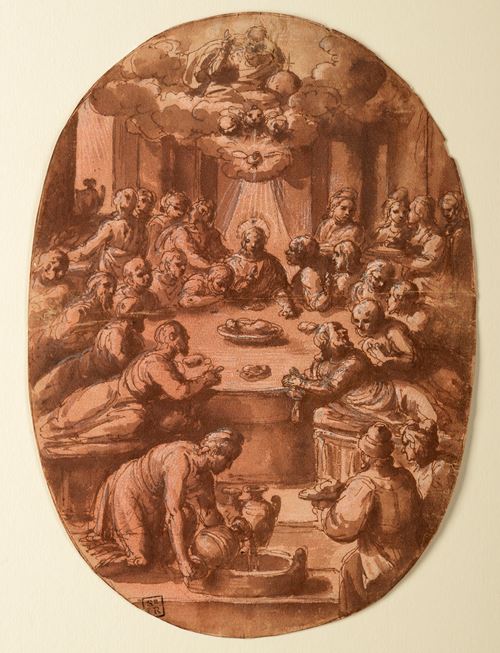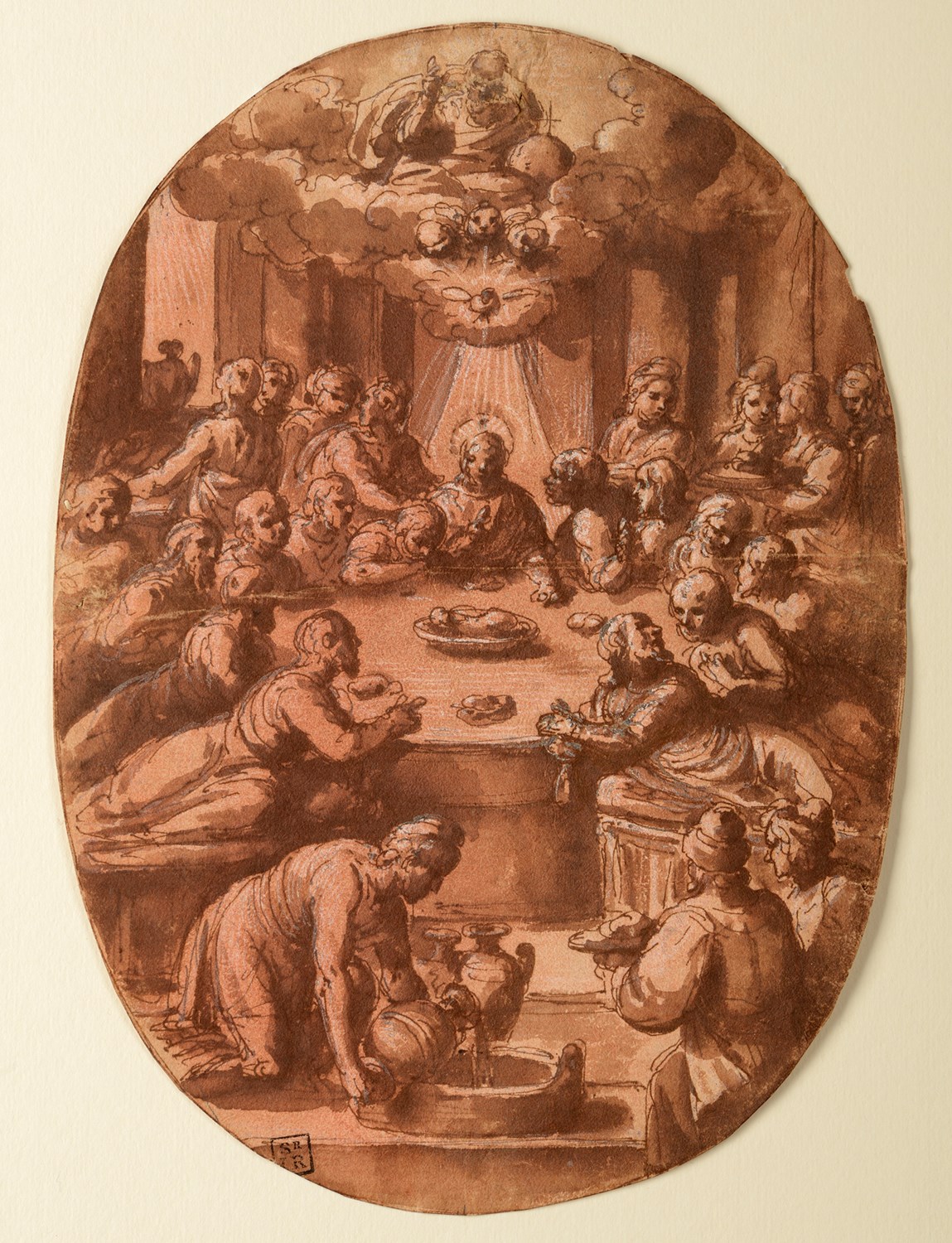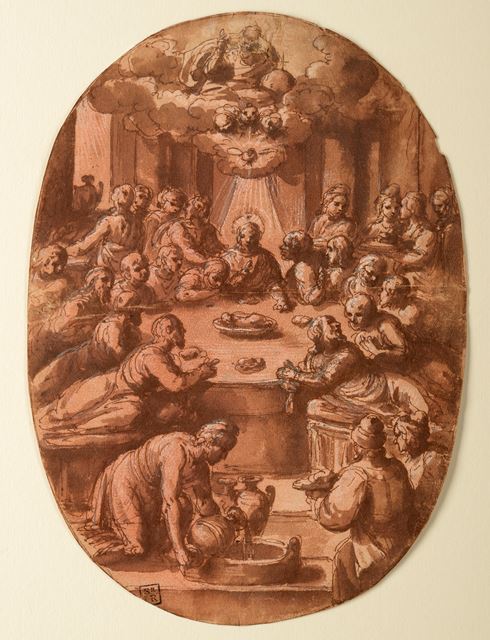
Cesare ROSSETTI
Rome c.1565 - Rome 1644
Biography
The Roman painter Cesare Rossetti was born around 1565 and, according to Giovanni Baglione’s Le vite de pittori, scultori ed architetti of 1642, began his artistic career during the pontificate of Sixtus V; that is, between 1585 and 1590. He is, however, first documented only in 1593, when he is recorded as a member of the Accademia di San Luca. He was a pupil and assistant of the painter Giuseppe Cesari, called Cavaliere d’Arpino, of whom he became a close friend and collaborator. (Indeed, Rossetti said of Arpino, in a trial transcript of April 1607, ‘we are friends together and we were brought up [together] from infancy’.)
Baglione records that Rossetti painted several monochrome scenes from the Passion for the Olgiati chapel in the Roman church of Santa Prassede, where Arpino worked on the vault frescoes in the late 1580s and early 1590s; Rossetti’s work in the chapel remains today, although in poor condition and difficult to read. The young artist also painted monochrome frescoes for the Sala dei Capitani in the Palazzo dei Conservatori on the Campidoglio, beneath frescoes by Arpino, as well as a cycle of scenes from the life of Saint Caesarius of Africa for the church of San Cesareo de Appia in Rome; a project supervised by Arpino but executed by Rossetti, probably together with Pasquale Cati, between 1600 and 1603. Rossetti also seems to have painted several works after drawings by Arpino, including two scenes of martyrdom in the Roman church of Santa Maria in Traspontina and some mosaics in the Vatican. In 1606 he is listed as a member of the pontifical academy of the Virtuosi del Pantheon. Rossetti also worked at Santa Maria in Aracoeli, San Silvestro al Quirinale and Santa Maria Prassede, and decorated the façades of a number of Roman palaces. He also painted religious and devotional easel pictures, often on a small scale.
Relatively few drawings by Cesare Rossetti have been identified, and of these very few can be connected to known paintings by him. Unlike Arpino, who displayed a particular preference for drawing in red or black chalk, Rossetti seems to have worked, as a draughtsman, mainly in pen and ink, although a number of chalk drawings are known. Drawings by or attributed to Rossetti are today in the British Museum, the Fitzwilliam Museum in Cambridge, the Art Institute of Chicago, Christ Church in Oxford, the Louvre, the Albertina in Vienna, and elsewhere. An interesting series of ten drawings of scenes from the Trojan War, each shaped in a distinctive way and several inscribed with the artist’s name, were on the art market in 1983 and are now dispersed among different private collections; these may have been studies for small paintings to be set into a decorative scheme.


